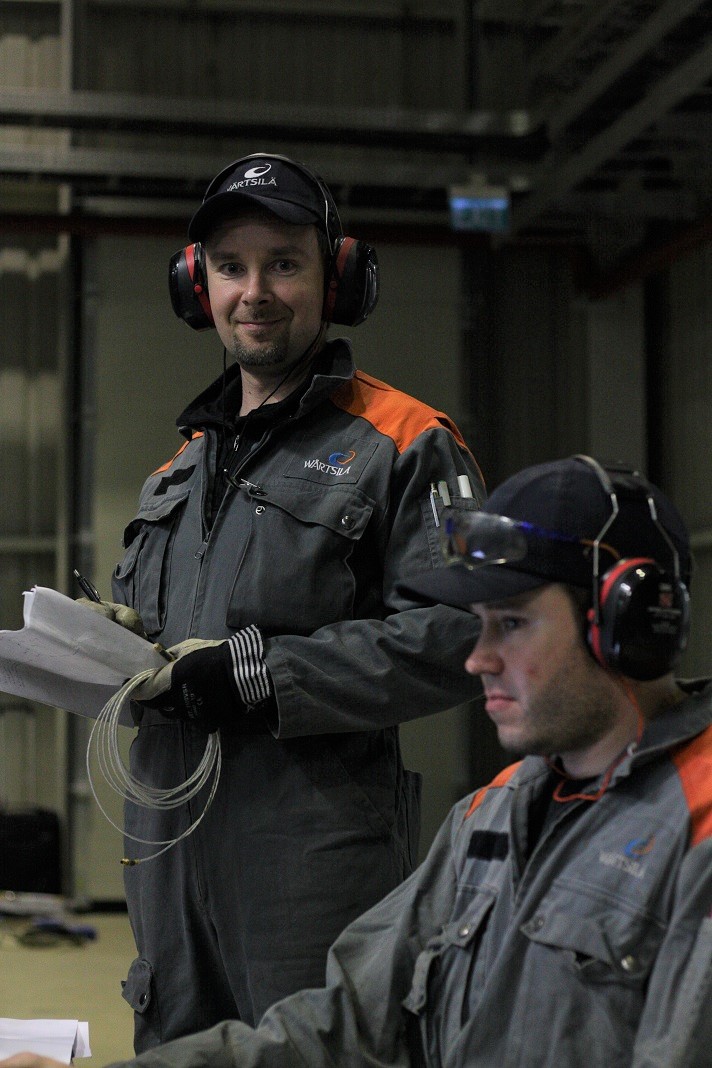

A digital twin is virtual copy of something in the real world. Wärtsilä uses them with both energy and marine customers to improve efficiency, lower emissions, boost safety and save money.
A stiff wind is blowing across a ship’s path. Should the vessel increase engine power and plough straight through or change course? What is the optimal thing to do, taking into consideration time, fuel and emissions? This is both a real-world and a theoretical scenario, played out using a digital twin.
A digital twin is a virtual replica of a real or potential physical entity. The digital version is meant to be an accurate copy of its physical twin, such as a ship. The digital twin can make use of real data from sensors on the physical object, like live fuel consumption.
“Based on that and weather data, the system can choose the most efficient route,” says Alexander Ozersky, Deputy Director of Intellectual Systems Integration at Wärtsilä Voyage. “It can then compare actual fuel consumption versus predicted consumption to identify areas to improve operation.”
Virtual ships for real benefits
There are many possible applications for digital twins in the marine industry. Their use in route optimisation can find ways to save time and fuel. Wärtsilä also uses them to optimise hulls and engines, so they can increase a vessel’s lifespan and lower maintenance costs. Digital twins can also help improve safety, such as by comparing actual roll angles to the ship stability model.
Computer-aided design and digital prototyping can reduce time and costs when creating something new, but a digital twin can be used through an entire lifecycle. It could be used in design, marketing, exploring different scenarios, customer training, employee onboarding, refurbishment or even end-of-life recycling.
“There are many digital projects going on at Wärtsilä. One of the recent ones from the marine business side is an EU-funded project during which Wärtsilä will develop digital twin of a greener, wind-propelled vessel, “ says Ozersky.
Models for tiny components or entire systems
The term “digital twin” is relatively new, but the concept isn’t. Tero Lokasaari, Senior Manager, Structural Dynamics at Wärtsilä Energy says that Wärtsilä has been using advanced level measurements and simulations for engine-generator set design and validation long before it had its current name. “We’ve been using engine-generator set simulations for 20 years,” says Lokasaari.. “We have a lot of experience with this and are excited to see digital twins develop, offering us more tools to improve our products and services.”

Antti Ouni and Jari Pellinen from the Wärtsilä Energy Structural Dynamics team perform testing for a new engine-generator set at a power plant in Turkey.
There are different types of digital twins, each for specific uses. A digital twin could model a tiny component in an engine or an entire energy system. Data analytics and machine learning could be combined with digital twins to help monitor the system, diagnose problems or predict future operations and incidents.
In energy sector, digital twins are an integral part of Wärtsilä’s GEMS energy management system. GEMS, which is part of the Wärtsilä energy storage and optimisation offering, is a platform that monitors, controls and optimises energy assets on both site and portfolio levels. It uses machine learning and real-time data analytics to determine what type of generation is best at a specific time, such as renewables, energy storage, or thermal generation.
The GEMS Grid Controller is a piece of the GEMS platform that can integrate a variety of power sources and instantly manage flexible energy generation and storage based upon the real-time needs of customers. The Grid Controller can boost the share of renewables, optimise generation, and improve system stability resulting in lower costs, lower emissions, and higher system efficiency. In order to validate these complex algorithms, they are tested against a digital twin of any customer energy system. The digital twin is able to fully simulate battery, renewable, and engine behaviour in a virtual environment to ensure that the hardware and algorithms will operate together seamlessly long before they are deployed to our customers.
Digital twins helping us towards a sustainable future
“There are many benefits to using digital twins in the energy sector,” says Jonatan Rösgren, General Manager, Electrical & Automation, Technology & Product Management at Wärtsilä Energy. “They can be used to give feedback both for optimizing operations as well as feedback to our engineers for new developments. We can optimise costs, validate different operating scenarios and improve reliability, efficiency quality and safety.”
Wärtsilä may have been using the digital twin concept for decades, but recently there have been huge leaps in computing power, mobile communications and sensor technology. What might the future hold for the digital twin?
“It will help us build better systems and have more satisfied customers,” Rösgren says. “It adds intelligence to the system, which is necessary to transform into a 100% renewable energy future. It is not just renewable assets we need; we need the system to manage them, too.”
Did you like this? Subscribe to Insights updates!
Once every six weeks, you will get the top picks – the latest and the greatest pieces – from this Insights channel by email.


